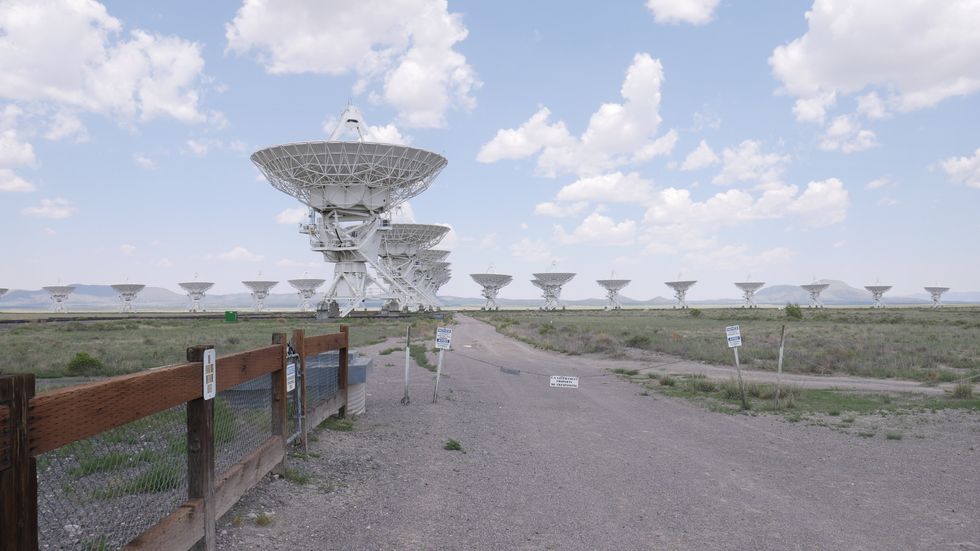Okay, I was kind of expecting it, but it still blew me away. The VLA stands for Very Large Array. It was the first and remains one of the very few telescopes of its kind. In technical terms, the VLA captures centimeter-wavelength waves meaning that the apparatus operates differently to the telescopes that capture visible light that humans have adapted to see. The frequencies that the VLA capture are much longer than the frequencies of visible light, making the large, 26-mile potential diameter of antennae the best way to capture these wavelengths. The bonuses of being 50 miles from the nearest notable town and housed at a plateau that sits just under 7000 feet above sea level make for the ideal conditions for monitoring radio waves that we have on Earth. The signals from the 27 antennae are added together to form a single cohesive image that gives far more information than a single antenna could provide.
All of this technical talk accumulates to a visit that is unlike most other tourist attractions. As I stayed in Albuquerque, the biggest city in New Mexico, the trip to the VLA was 130 miles away through just a few small towns. Finishing with a 50-mile drive from the nearest town through what most people would qualify as emptiness (aside from the breathtaking views of the landscape). Through the vast nothingness, at the crest of a small hill, the large antennae can be seen from 20 miles away. The man-made structures look almost eerie amongst the largely untouched desert landscape. As we drove past just a few cars on our final approach to the array, the size of each antenna became more and more impressive until we began walking around and stared directly up at the 82-foot diameter of each antenna at its height of around 90 feet.
Aside from all of the striking physical characteristics, I was curious about what the telescope had actually done, the discoveries that it had actually made. The visitor center provided me with enough information to keep me satisfied, and I was more than impressed with some of the discoveries made by the telescope. Some of the discoveries that include things that are fundamental to our current understanding of the universe include the discovery of ice on Mercury, the existence of "miniquasars" within our own galaxy, the reveal of the difficult-to-distinguish center of the Milky Way, and the discovery of the first "Einstein Ring" Gravitational Lens that proves gravity bends light.
Moral of the technical story is that the VLA is a spectacle to behold. Whether or not you have any interest in physics or even in science in general, to see the vast array of antennae that sweep across a surprisingly large plain in the middle of New Mexico is something every traveler should experience. It's a view unlike any other.









































